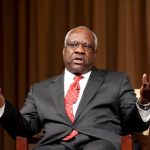
No Bars To Eligibility
Software is still not per se nonstatutory, despite the enthusiasm of those who wish it so. Also, business methods are still not per se nonstatutory, much to the chagrin of concurring Justices Sotomayor, Ginsburg, and Breyer. Yes, the Court found that Alice Corporation’s particular software-related method, system, and media claims were not patent eligible. However, that finding in no way means that no software-related inventions are patent eligible.
Test Framework: Mayo!
To counter the competing patent eligibility tests proposed by the U.S. Court of Appeals for the Federal Circuit, Justice Thomas delivered the opinion for a unanimous Court that outlined a single framework to be applied for determining if a claim is to eligible subject matter. As it turns out, that framework comes directly from the Mayo case (see also MPEP 2106.01). In a simplifying move, the Court directed that the same analysis be applied to both product and process claims (NOTE: This direction supersedes the previous detailed inquiry guidance from Bilski as captured in MPEP 2106(II)(A) – Practical Application of Machines, Manufactures, and Compositions of Matter (Products), and MPEP 2106(II)(B)) – Practical Application of Processes (Methods)).
According to the Court, the framework from Mayo must be applied as follows:
Step 1) Determine if a claim is to eligible subject matter. The patent eligible categories are processes, machines, manufactures, and compositions of matter. If the claim is not of one of these categories, then it is ineligible.
Step 2) Determine if the claim is barred by a judicially-created exception. Specifically, laws of nature, natural phenomena, and abstract ideas are excepted. Continuing with this step, a two part analysis applies to the abstract idea exception:
Part I) Determine whether the claim is directed to an abstract idea. Preemption (e.g., monopolization of the basic tools of human ingenuity and/or scientific and technological work) is the concern in this determination. A claim that subsumes all possible applications of an abstract idea is, in practical effect, the abstract idea itself and, therefore, is not patent eligible.
Part II) Determine whether the identified abstract idea has been applied in an eligible manner. Disembodiment (e.g., no meaningful tying of the abstract idea to a particular practical application) is the concern in this determination. It is not sufficient to just say “apply it” in the claim. Nor is it sufficient to just say “on a computer” in the claim. Instead, practical application of the abstract idea is required to qualify a claim as “significantly more” than a disembodied abstract idea.
New Habit: Practical Application
The Alice decision tells patent professionals to start focusing their claims on practical application with as much vigor and enthusiasm as they have for decades been focusing on the presence of a machine. For example, an abstract idea applied as an improvement in another field or technology may be patent eligible, regardless of the presence of a machine such as a computer. However, that is not to say that machines/computers are irrelevant! To the contrary, non-generic automation of an abstract idea may itself be the patent eligible improvement.

